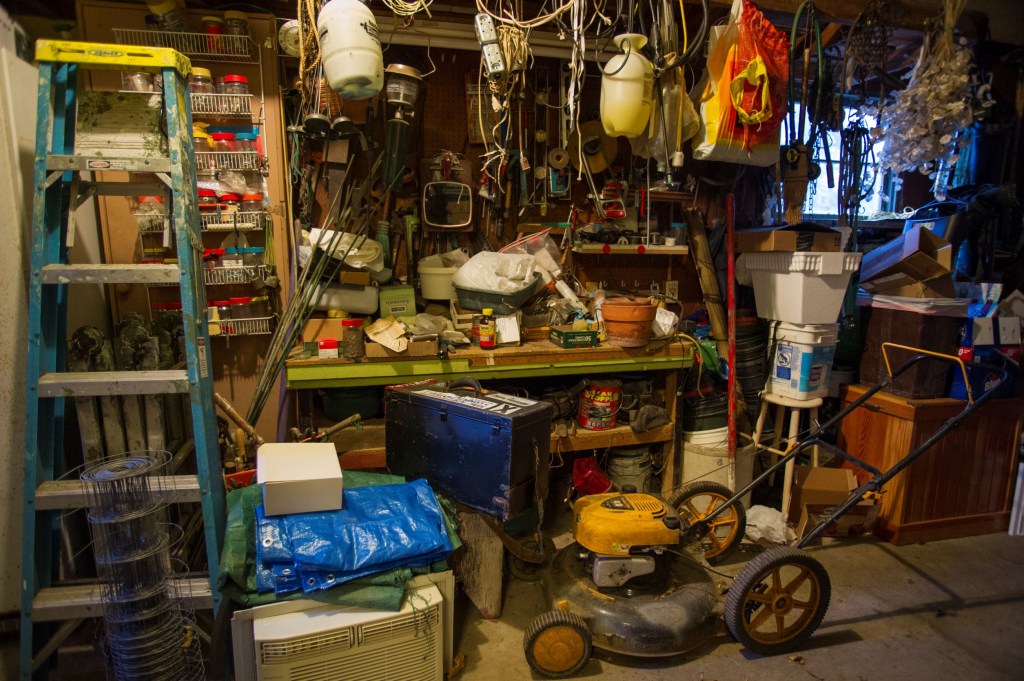
Take ‘Mow’ Care and Winterize Your Lawn Mowers for Storage
Lawn tractors and mowers can do a lot of yard work, but they’re not designed to handle snow. So, when winter comes knocking, that usually means exchanging the lawn mower for a snow blower. But you can’t just shove the mower into a shed and call it a season. Before the chill and frost move in, you have to winterize your lawn mower properly. And secure winter storage is only part of the process.
Winterize your lawn mower properly or you might need a new one in the spring

Much like motorcycles and outboard boat motors, lawn mowers need some care before going to sleep for the winter. Keeping them secured in a shed or similar location to protect them from weather, animals, and thieves is a solid first step. But winterizing your mower goes further than that.
Although electric mowers are available, many lawn mowers use four-stroke, gasoline-powered engines. And even in winter, gasoline has a limited shelf life. As some of the chemicals within your fuel start to degrade, they clog and damage components, Popular Mechanics explains. And if the gasoline degrades enough, it won’t ignite properly, or possibly at all.
Then there’s the ethanol. Essentially all modern gasoline contains ethanol to help the fuel burn more cleanly. That’s not a problem even for carbureted engines, which many lawn mowers still use. But when gasoline sits for an extended period, the ethanol separates from the rest of the fuel. Once it does, it starts dissolving plastic and rubber parts. Plus, ethanol is hygroscopic, meaning it attracts moisture. And metal plus moisture equals rust.
In short, if you leave gasoline in your lawn mower before putting it into winter storage, it might not start in the spring. Not even fuel-injected engines are immune to clogs from degraded gasoline and ethanol.
But if you want to winterize your lawn mower properly, you can’t just stop at the gasoline, Consumer Reports says. Cold temperatures play havoc on electric mowers’ and tractors’ batteries, for one. And it’s not ethanol-attracted moisture that can make mowers rust. Trapped leaves and grass and old engine oil cause corrosion, too. All these things have to be addressed before putting your lawn mower into winter storage.
How do you winterize a lawn mower?
As noted earlier, preparing a lawn mower for winter storage is similar in some ways to the motorcycle winterization process. That includes the necessary gasoline-related precautions.
There are two options for winterizing your mower where the fuel is concerned. The first is simply draining the fuel tank and running the motor until all the residual gasoline is used up. After all, the tank, engine, and carburetor can’t be damaged by bad gas if there’s no gas left. Just don’t keep any leftover gasoline indoors—it’s a fire hazard, PM warns.
The other option is to stabilize your gasoline with a fuel stabilizer. Just add the prescribed amount to a full tank and let your mower run for a few minutes to let the stabilized fuel circulate. Then, shut it off and let it cool completely.
After dealing with the gasoline, if you have a lawn tractor, remove its battery. Hook it up to a battery tender if you have one, or if it’s very old, get a new one in the spring. And if you have an electric mower, remove its battery pack as well.
Next, winterize your lawn mower by removing its spark plug. This is partially to prevent accidental starts during the next steps, and partially to see if it needs replacing. And after removing it, make sure to squirt some oil into the socket for extra rust protection, PM advises.
After that, clean your lawn mower’s deck and remove any old grass, leaves, mud, etc. For stubborn gunk, use a degreaser, some water, and a wire brush. And if you remove some surface rust, now’s a perfect time to give your mower some fresh paint.
Winterizing also involves getting it ready for the spring
The winter storage preparation steps described so far have been about preventing damage to your lawn mower. But winterizing your mower is also about ensuring that it starts in the spring. That’s why, even if your spark plug is in decent shape, This Old House recommends getting a new one: easier starting.
Besides stabilizing the gasoline or draining it, winterize your lawn mower by changing its oil. As mentioned earlier, old oil that sits around can cause corrosion. The additives in fresh oil, on the other hand, haven’t degraded to the same extent. As a result, the oil won’t just protect better, but it will help the engine start easier, too. However, if you’re going to drain the fuel tank, change the oil before letting the engine run dry, Lifehacker advises. That way, the fresh oil circulates as much as possible.
To further improve starting ease, before putting your lawn mower into winter storage, change its air and fuel filters. Or, if your filters are reusable, clean them. Finally, sharpen or replace your mower’s blades so it cuts through the grass with ease. Just make sure to balance the blades before reinstalling them, PM notes.
It might seem like a lot of work to winterize your lawn mower. But a bit of care and prep-work is better than having to buy a new mower in the spring.
Follow more updates from MotorBiscuit on our Facebook page.


